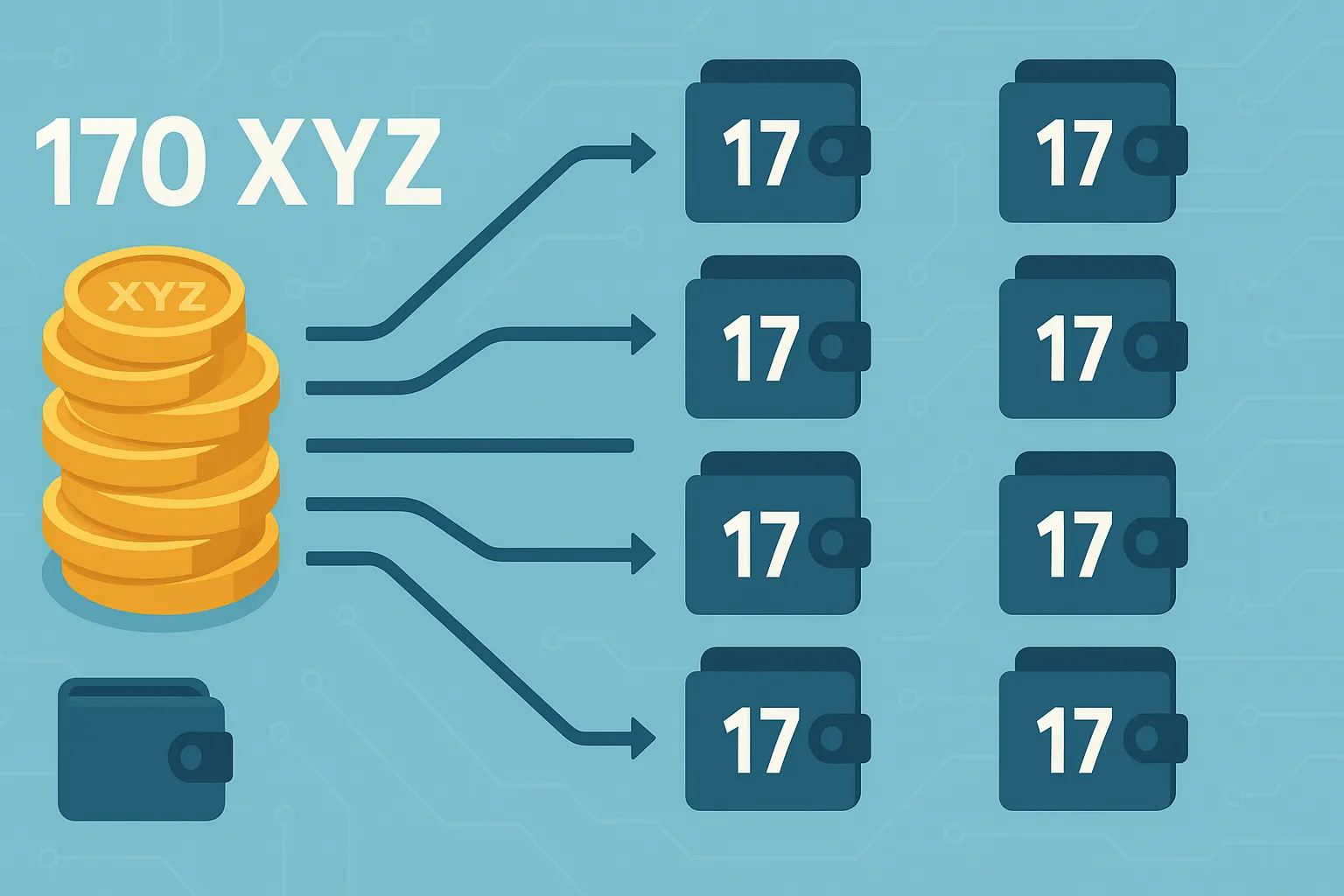Split 170 XYZ Tokens Across 10 Wallets | 170 ÷ 10 = 17
How to Divide 170 XYZ Tokens Equally Among 10 Wallets (170 ÷ 10 = 17)
Dividing 170 tokens equally between 10 wallets puts each one of them into exactly the same 17 XYZ tokens. In the blockchain, this straightforward maths supports an open, transparent token allocation to your earliest adopters.
Table of Contents
- Why Precise Token Distribution Matters
- Breaking Down the Math: 170 ÷ 10
- Automating with Smart Contracts
- Keeping an Eye on Gas Costs
- Real-World Insights from Token Drops
- Best Practices for Transparency
- FAQ
Why Precise Token Distribution Matters
In NFT and DeFi offerings, small mistakes can ruin trust. When fans see uneven distributions, there’s a questioning of the validity of the contract. Sending every wallet exactly 17 XYZ tokens confirms your smart contract integrity and helps build trust from the beginning.
Breaking Down the Math: 170 ÷ 10
Mathematically, it’s:
170 ÷ 10 = 17
170 divided by 10 is 17 with no remainder.
It’s important to verify that the sum amount divides evenly to avoid leftover tokens (“dust”). Verify divisibility before running your code in the event of unforeseen issues.
Automating with Smart Contracts
Manual transfers are wasteful and incur gas fees. Instead, wrap the logic in a smart contract function which loops recipient addresses:
function distributeTokens(address[] calldata recipients, uint256 totalAmount) external {
uint256 share = totalAmount / recipients.length;
for (uint256 i = 0; i < recipients.length; i++) {
_transfer(msg.sender, recipients[i], share);
}
}
Enter the list of ten wallet addresses and the number of tokens to send (170).
The function then sends exactly 17 XYZ tokens to each address in a single transaction, minimizing boilerplate and error.
Keeping an Eye on Gas Costs
Each iteration of the transfer loop consumes gas. Take the following into account to keep costs low:
- Batch Approvals: Have users pre-approve the sum (170 XYZ) to limit duplicate allowance checks.
- Event Logging: Log events instead of storing to storage for off-chain balance verification, saving gas.
- Gas-Optimized ERC-20 Contracts: Use a variation that disables safety checks within the framework of a trusted setting to minimize per-call gas usage.
Real-World Insights from Token Drops
For example, one project attempted to divide 1,234 tokens across 37 wallets but was left with remaining tokens that got stuck, which took time to clean up. Simple divisions like 170 ÷ 10, however, work perfectly. Tip: place an Etherscan “Token Holders” widget on your site to display real-time on-chain balances for all of the ten wallets, demonstrating transparency.
Best Practices for Transparency
Before proceeding with the distribution, post a concise summary to your community:
- Total Tokens: 170 XYZ
- Number of Recipients: 10 wallets
- Tokens per Wallet: 17 XYZ
- Estimated Gas Cost: around 0.02 ETH
Providing these statistics in your Discord or Telegram groups minimizes queries and fosters trust.
FAQ
What if 170 won’t evenly divide by 10?
In that case, some of the tokens remain residue (“dust”). You can deal with that by rounding down the total to a multiple of the recipients and sending the excess to a treasury, or completing a final transfer for the last tokens. Make sure to clarify your approach well in advance.
How do I reduce gas fees even further?
Consider using multisend contracts, batching like in Polygon’s bundle transactions, or Layer 2 networks for the first few distributions. Bridge tokens to mainnet only when necessary to reduce expenses.
How do I make sure the distribution goes on-chain?
Use explorers like Etherscan or a custom dashboard that invokes balanceOf per each recipient. Adding a real-time verification widget can show transparency and ease your community.
Post created by Robert AI Team




